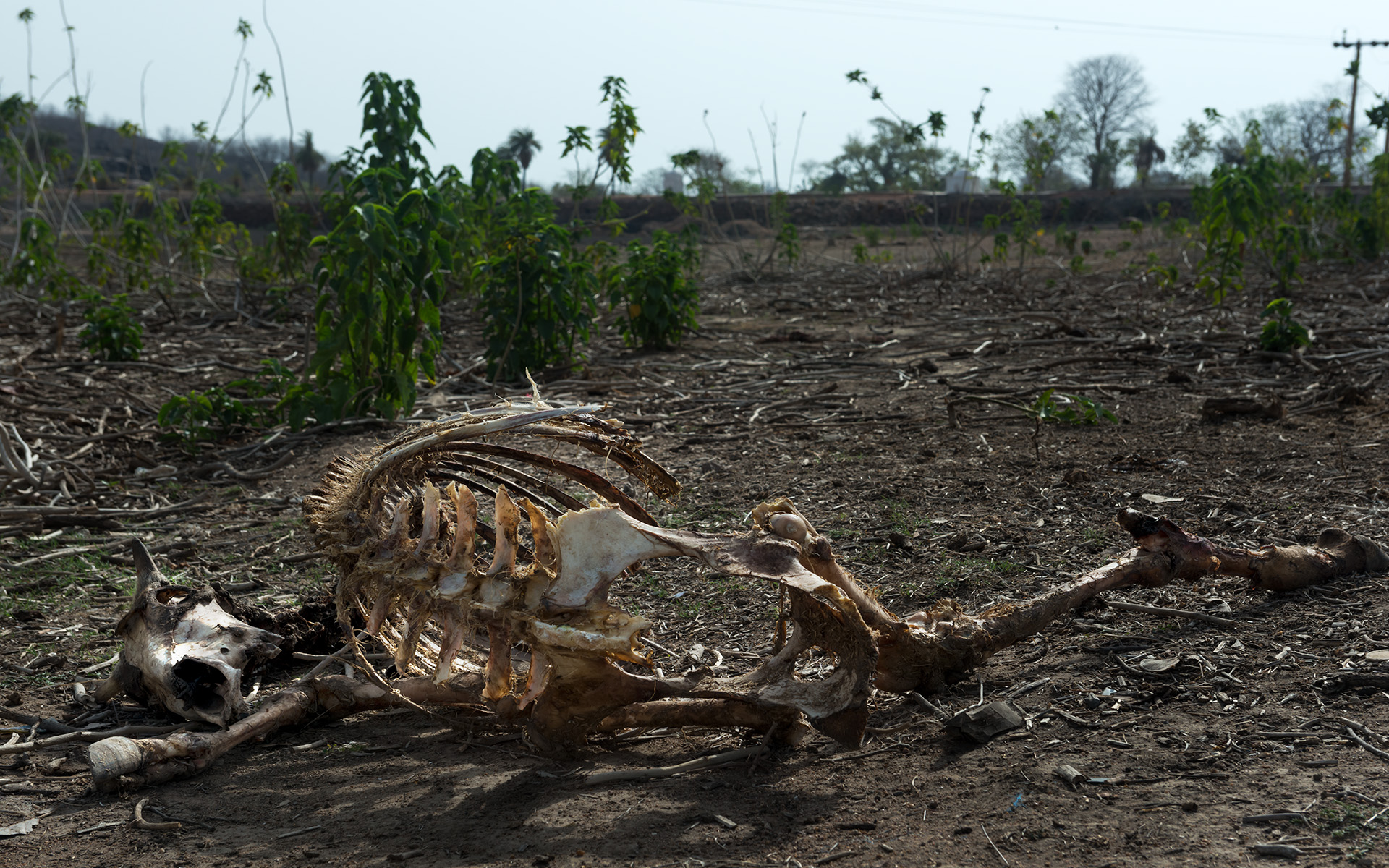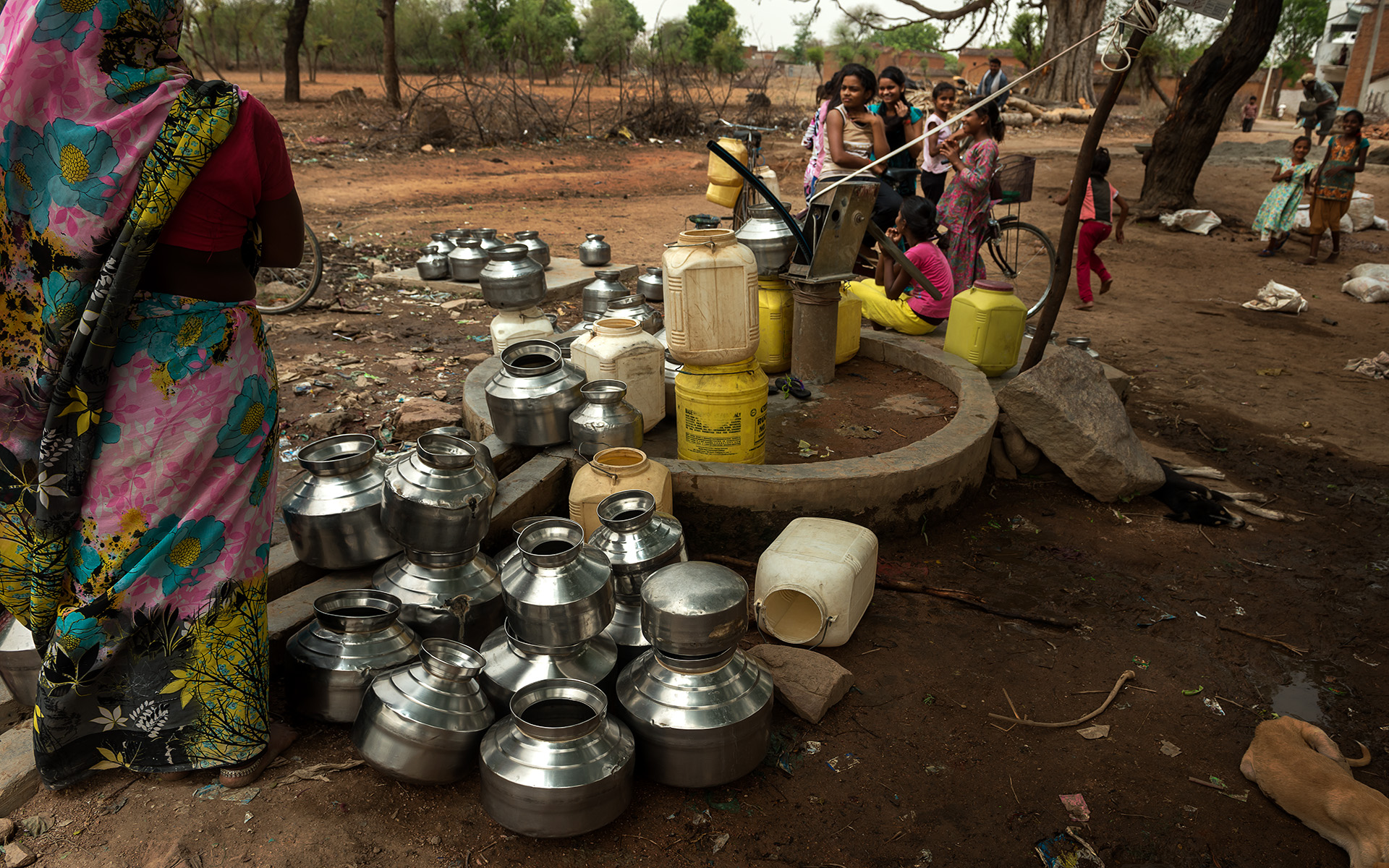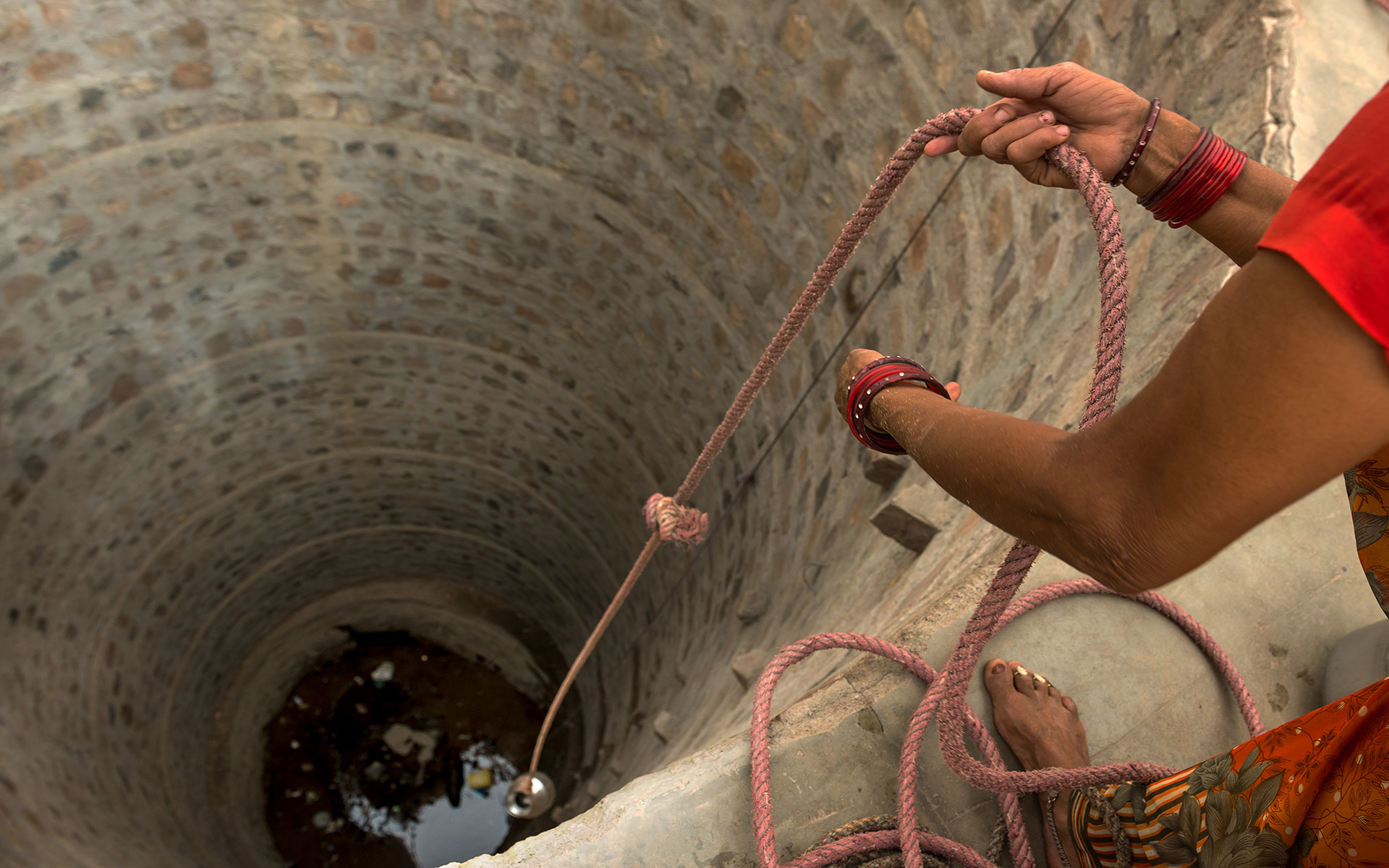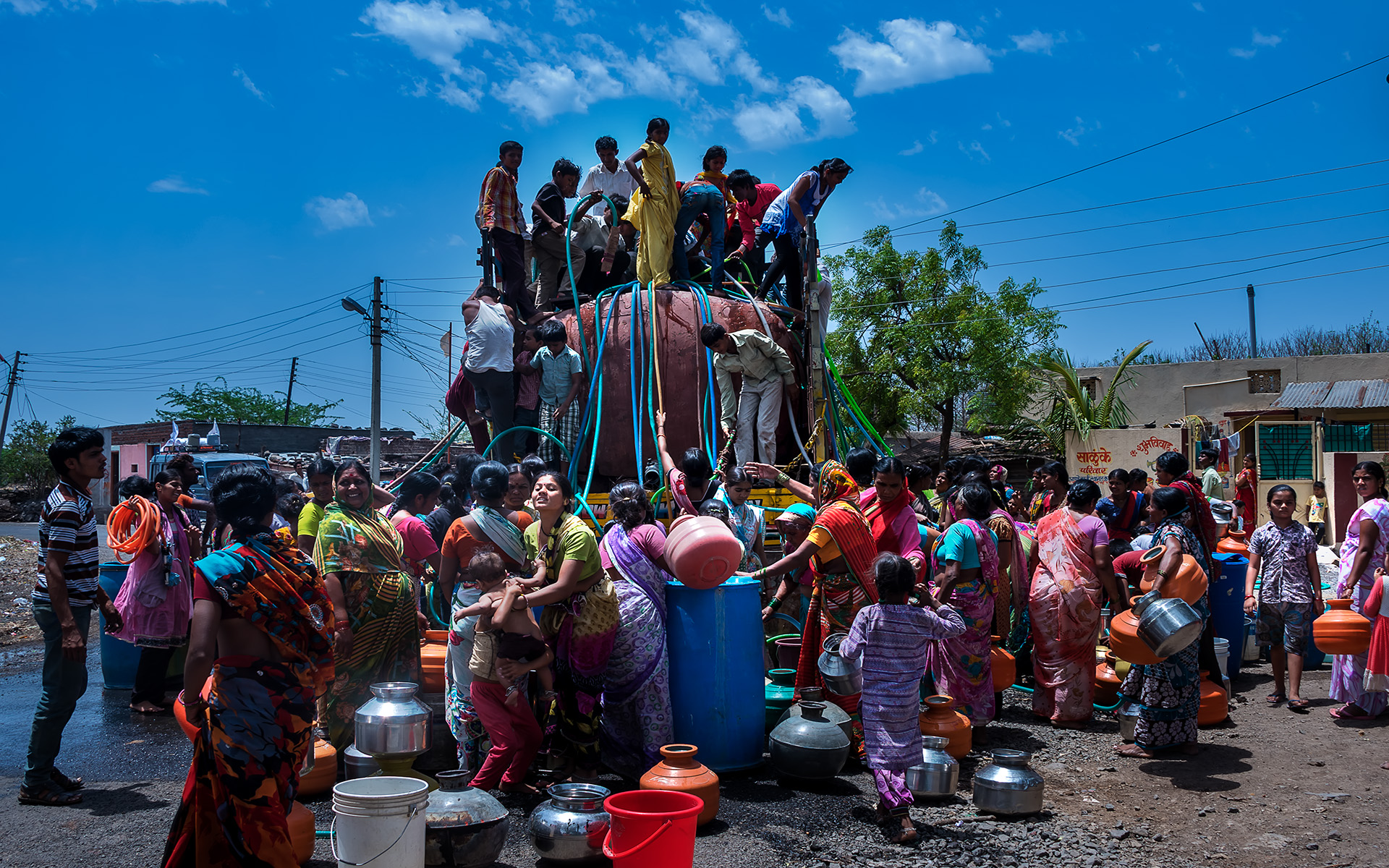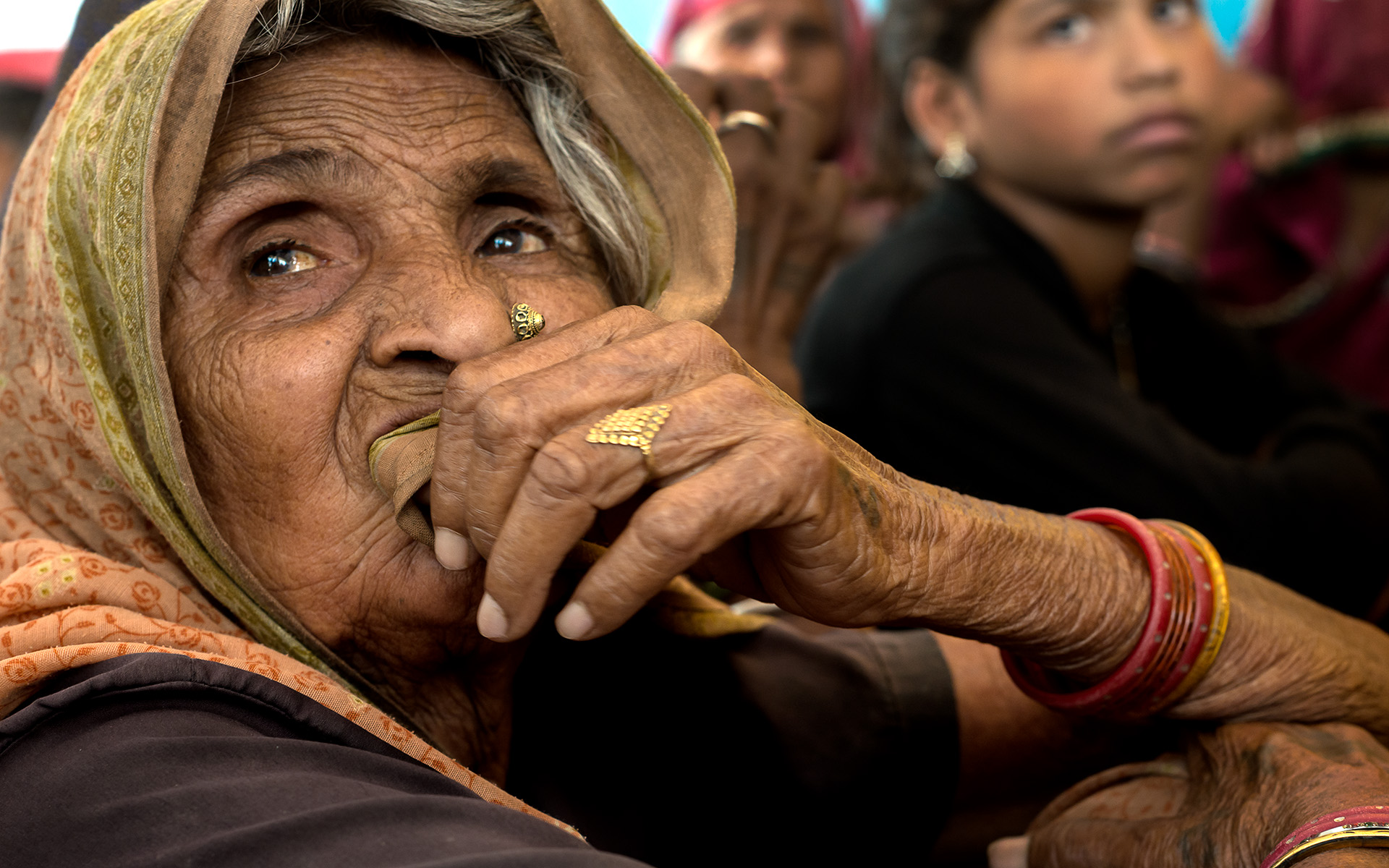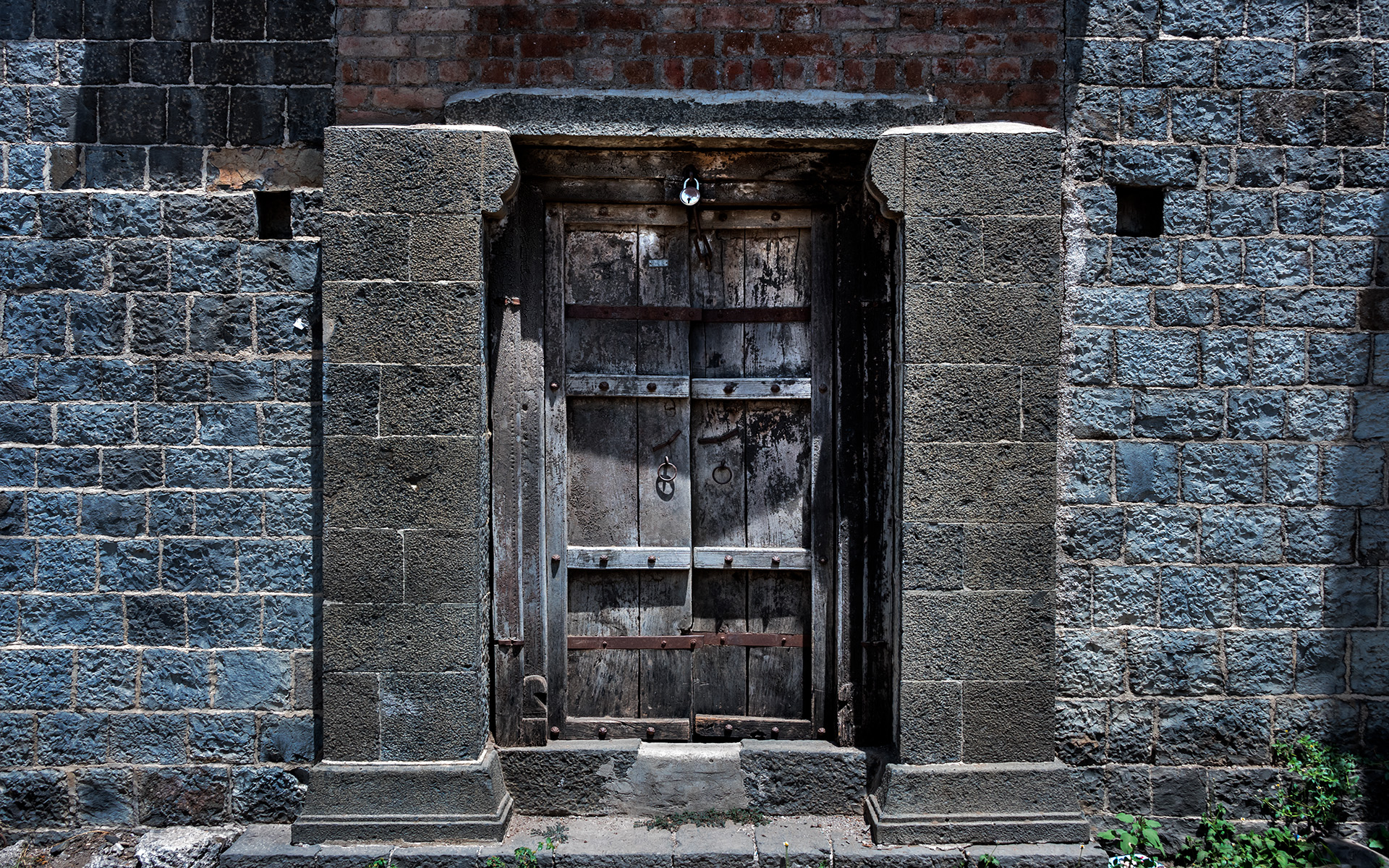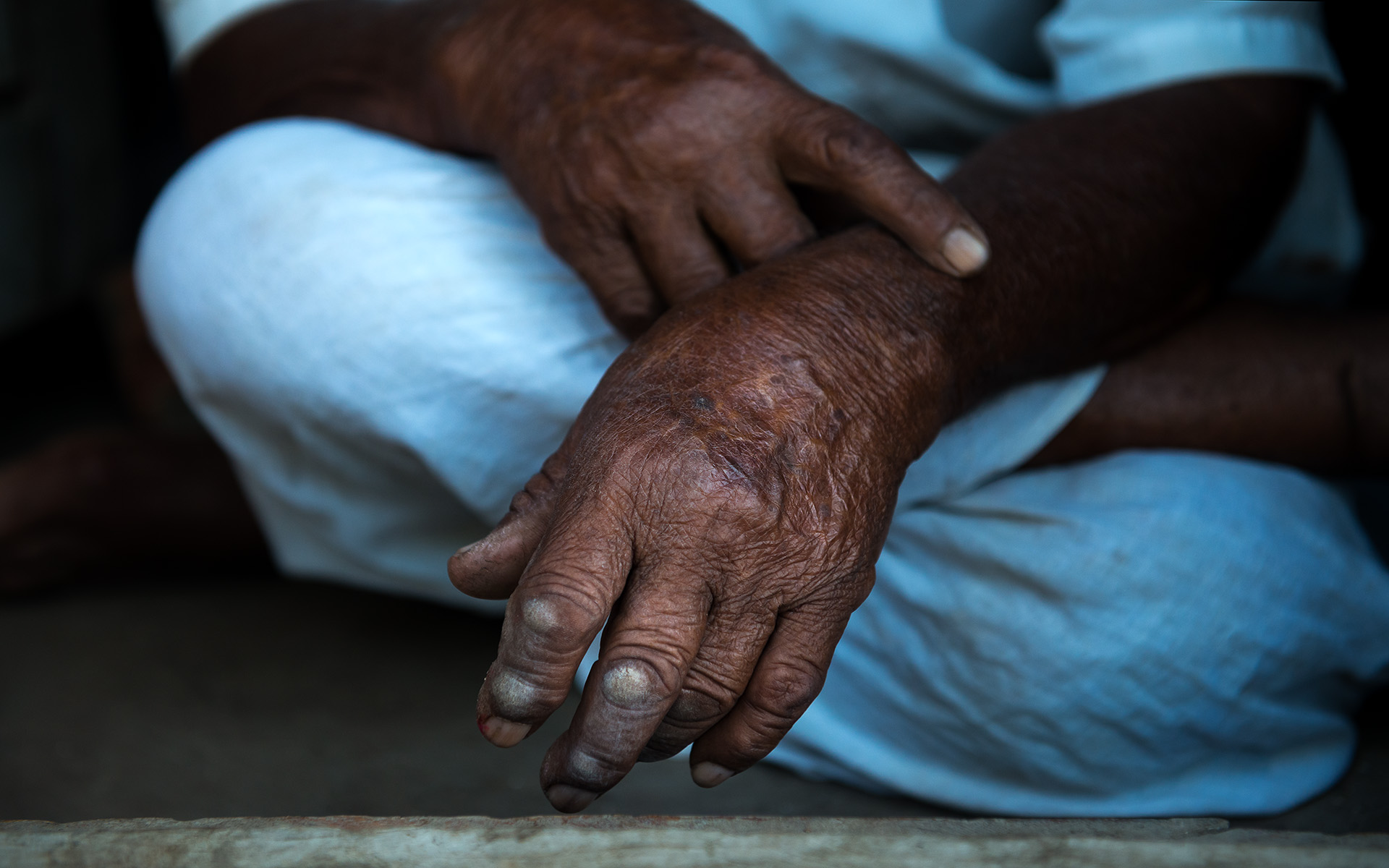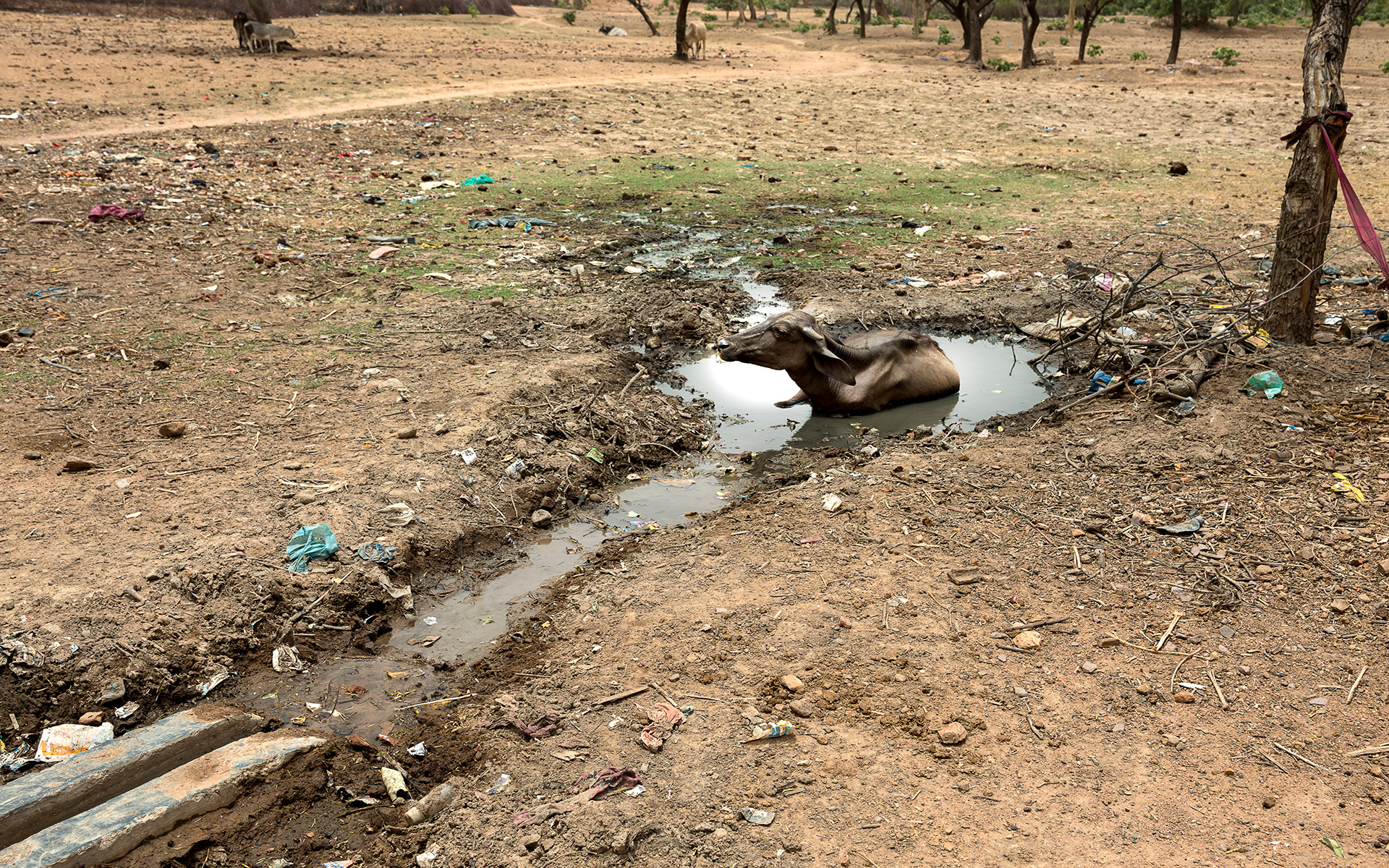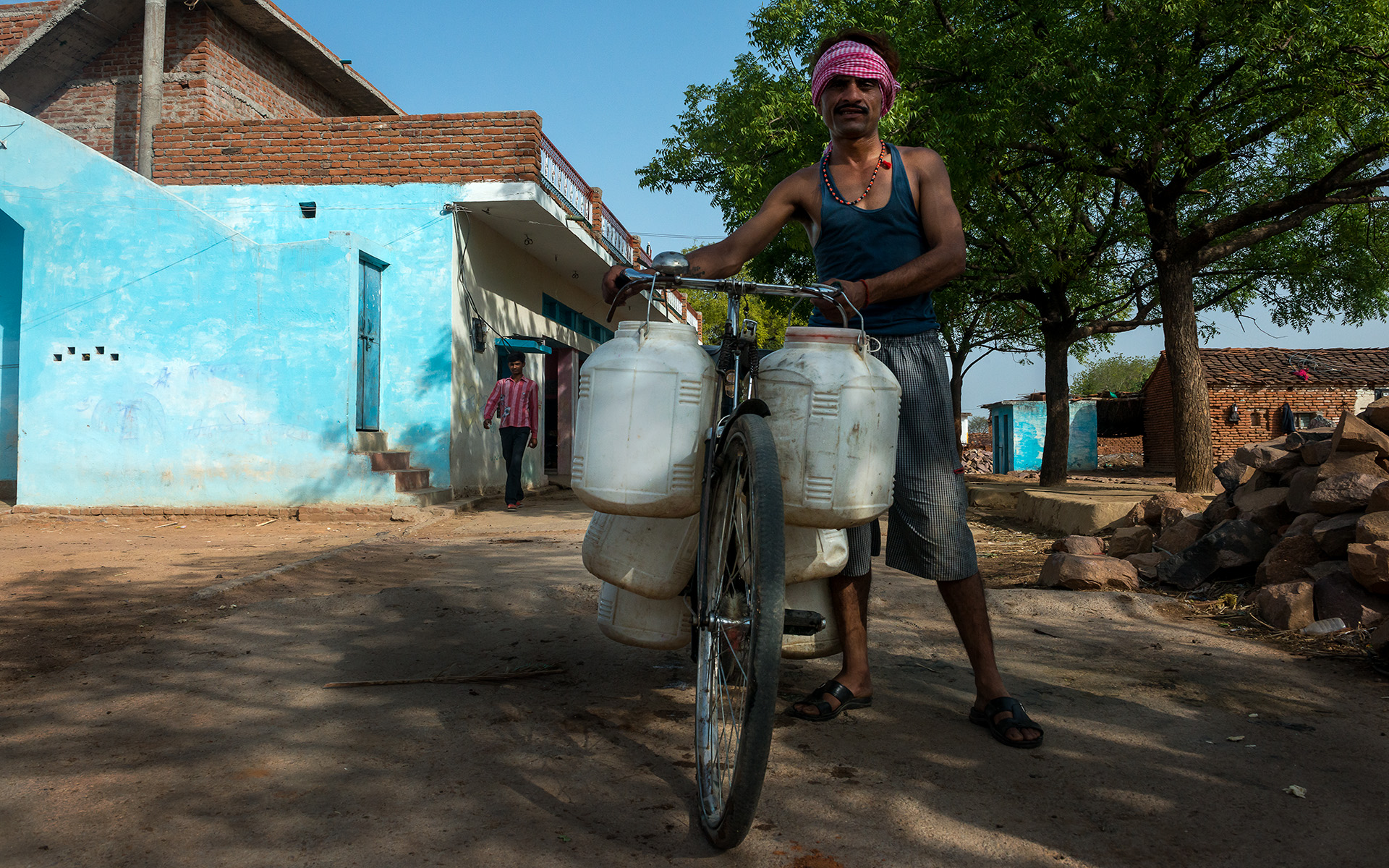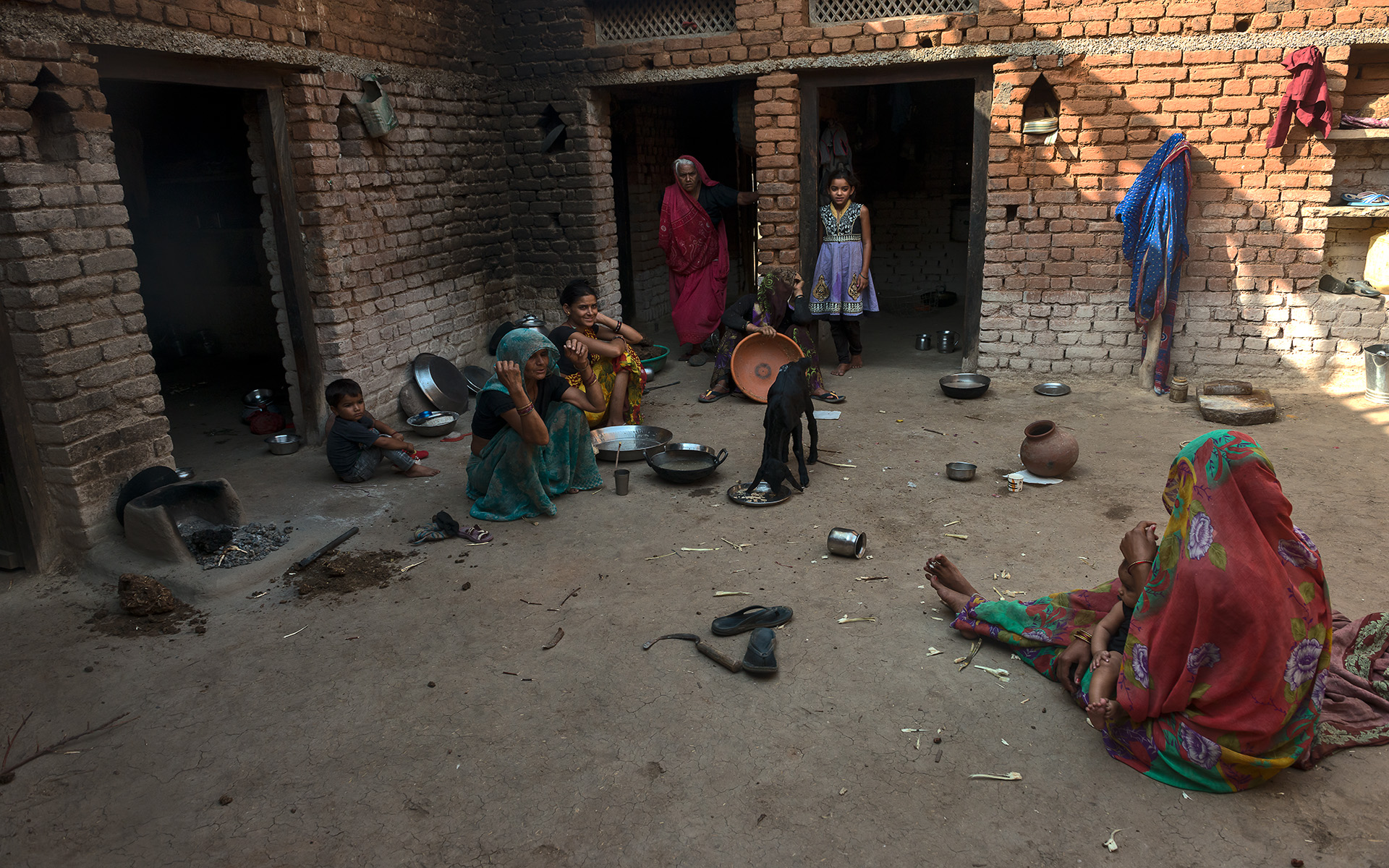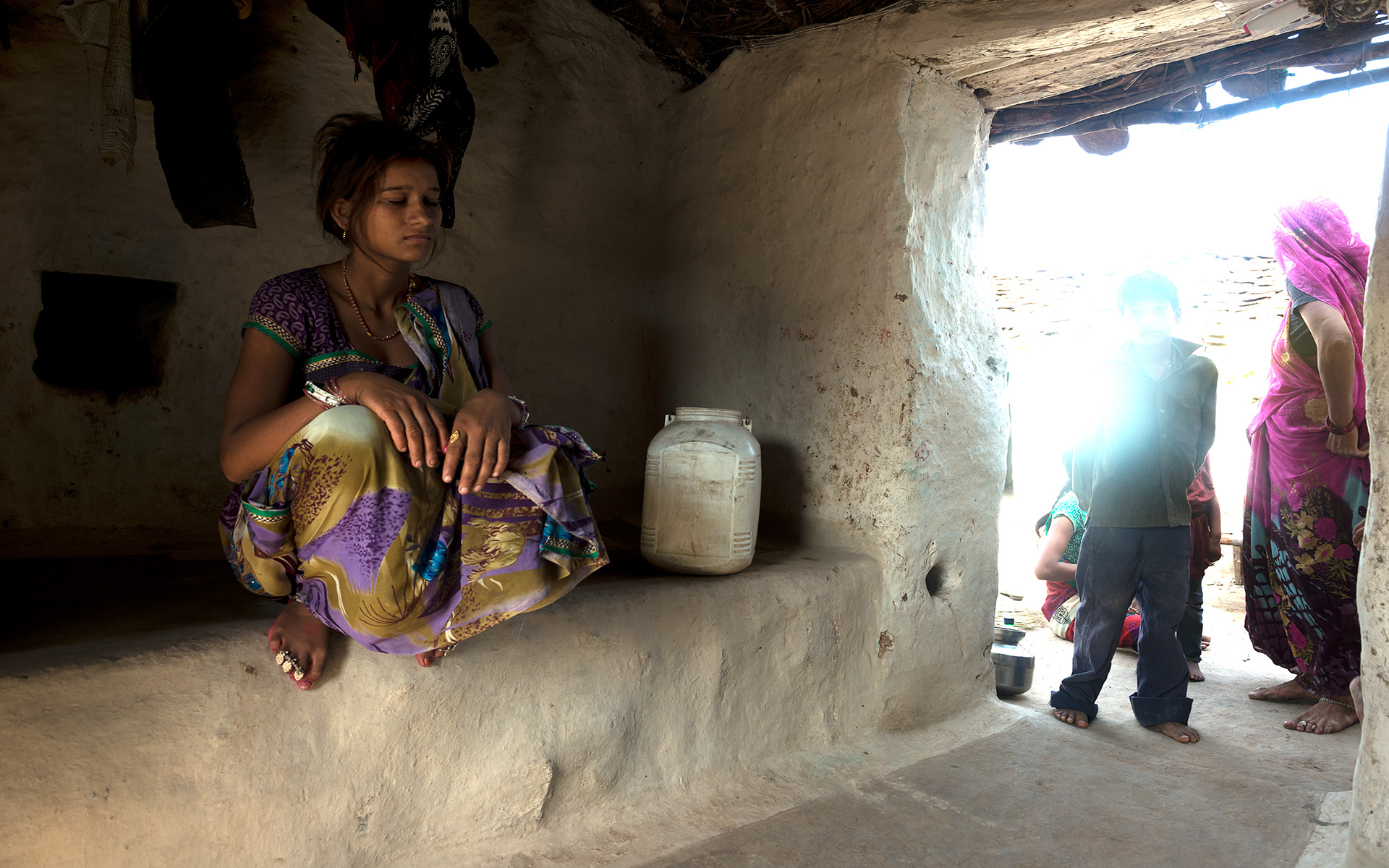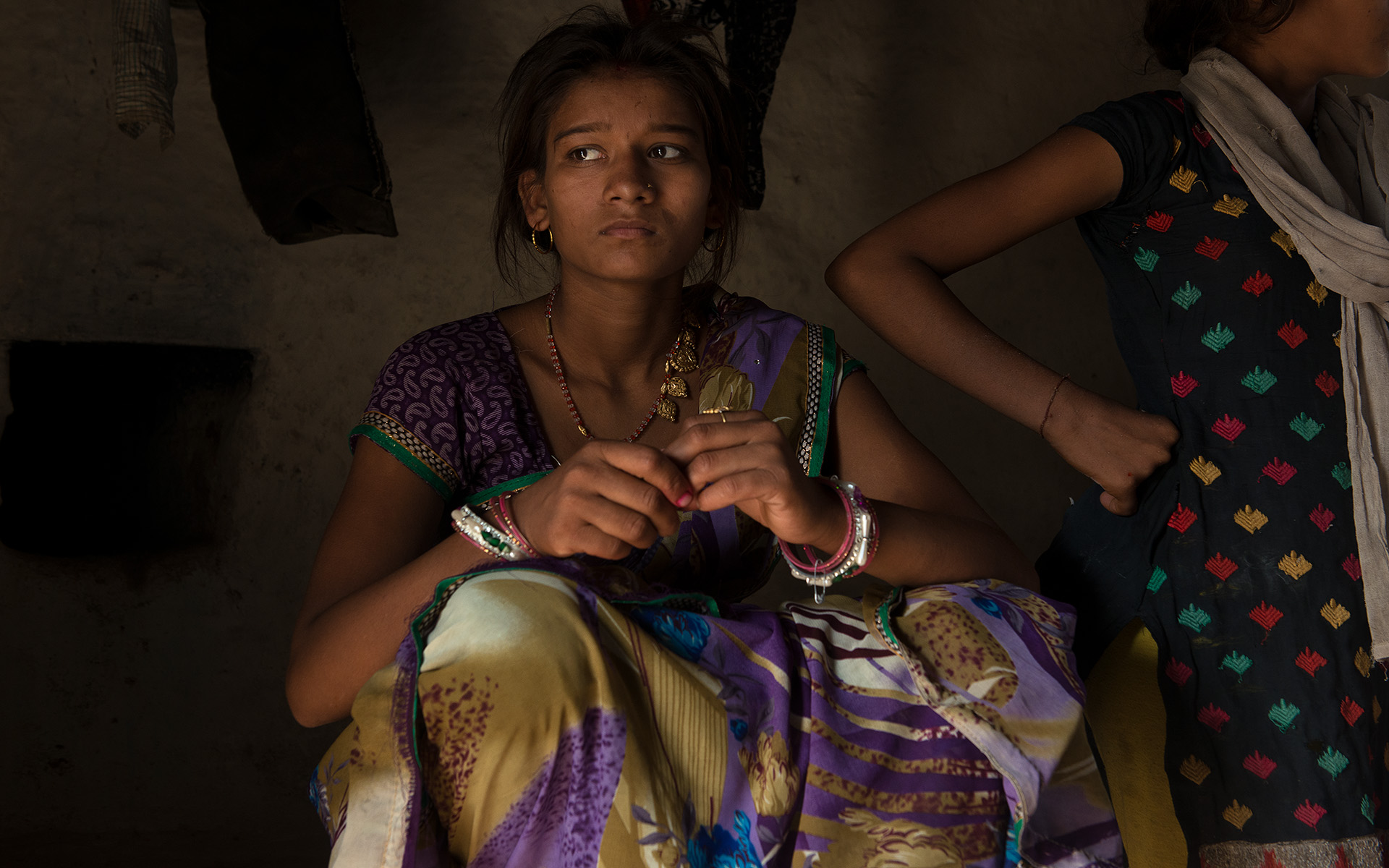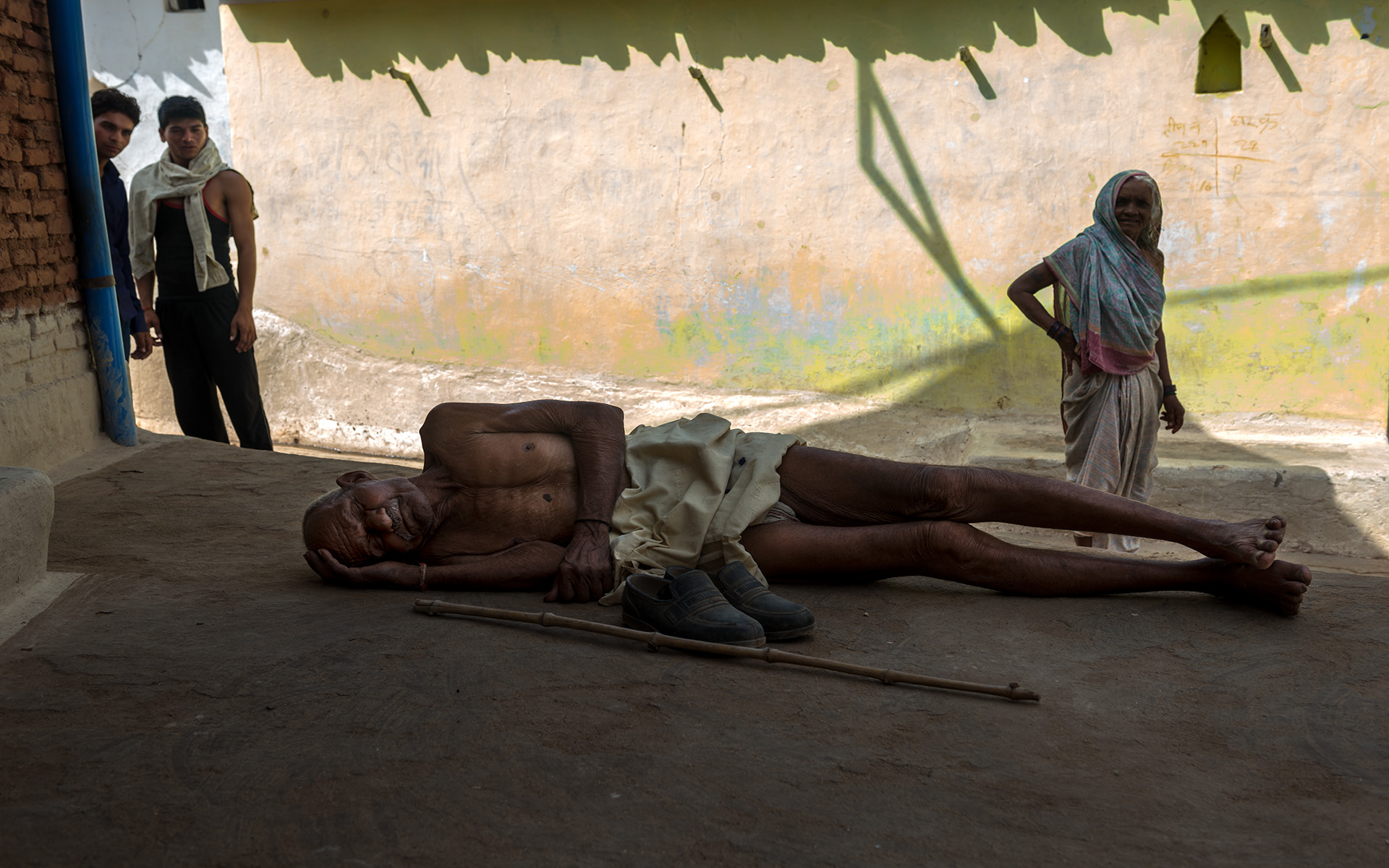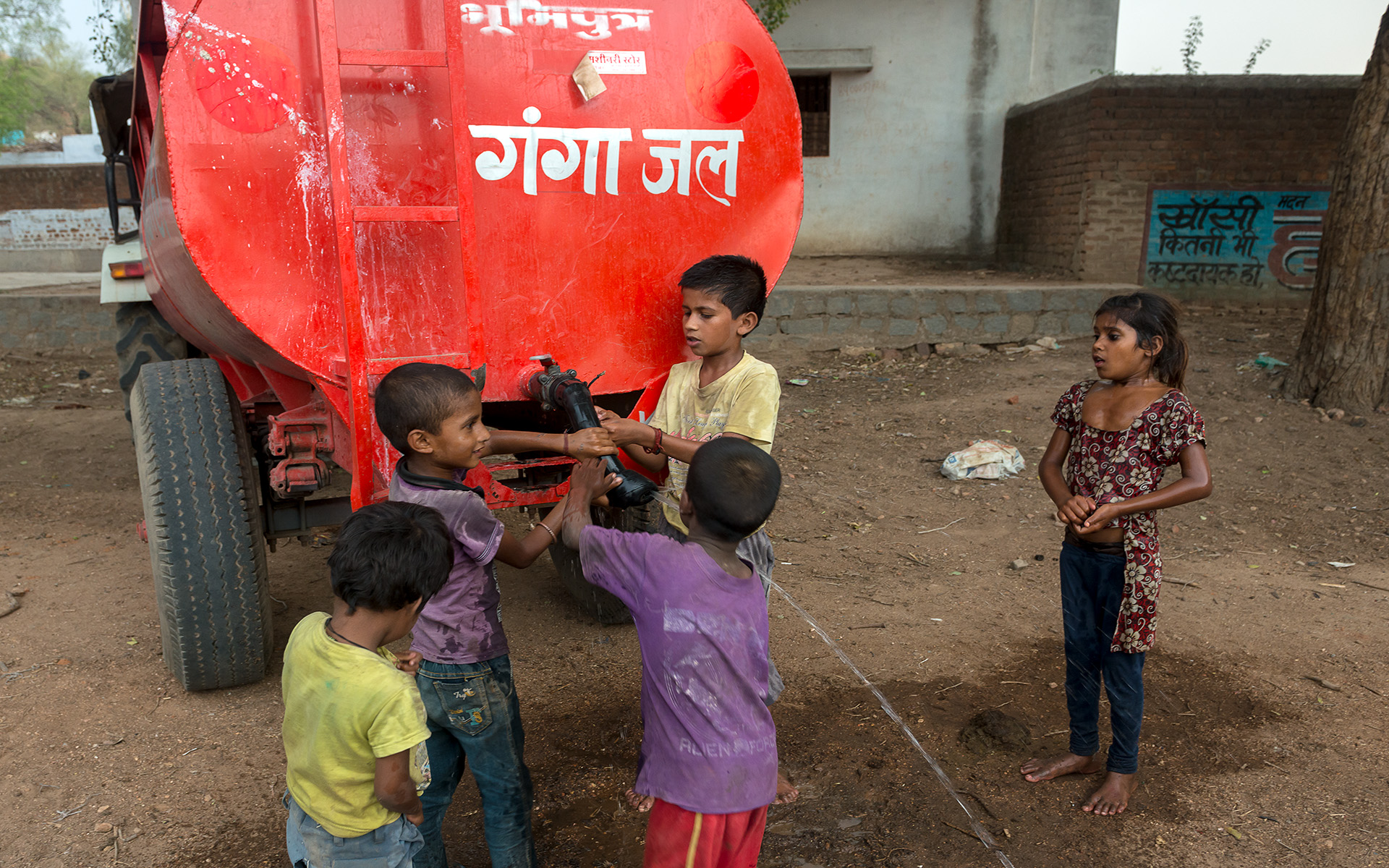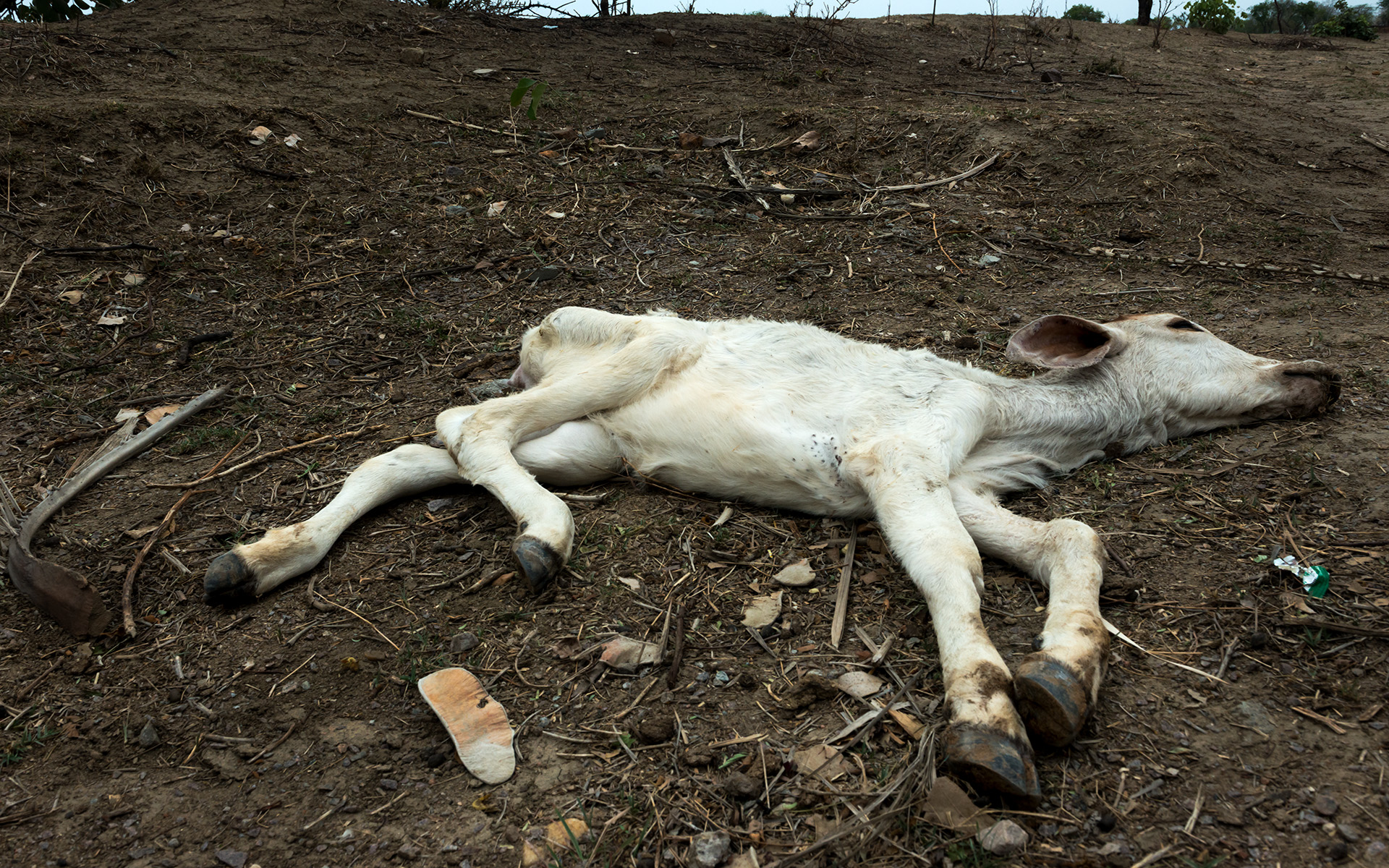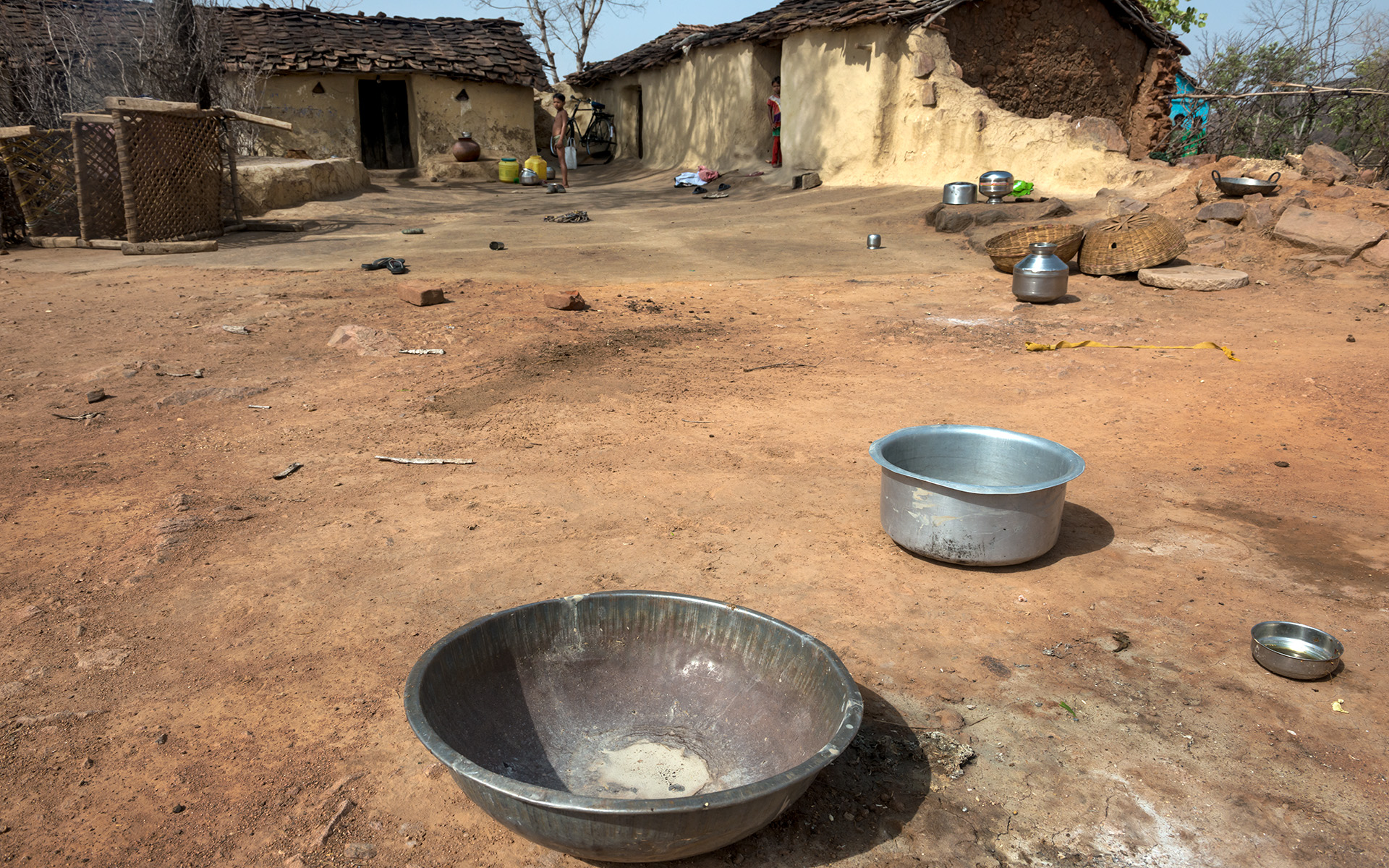Drought
“We don’t know how we are surviving and how long we will survive” said Phoolchand with his voice dripping with resignation. Bundelkhand Region, covering a part of Uttar Pradesh and Madhya Pradesh missed 3 seasons of monsoons and all around there are endless eerily empty fields. Lakes, rivers and wells have dried up. Unchecked exploitation of ground water is playing havoc with the environment. Trees are dead. Occasional arrival of a water-tanker in a village leads to a mad scramble. Agile children climb atop the tanker to insert the pipeline of their family.
Anxious mothers wait below at the other end of the pipe, inserted into water vessels for much needed basic requirement of life. The other side of this horror is that there is no vegetation and without food and water, thousands of cattle are dying. The countryside smells of rotting flesh and is sculptured by animal bones.
The so called development agenda pushed by successive Central and State Governments of India based on industrialization of agriculture has broken the back of independence and resilience that rural societies enjoyed for millennia. The welfare state has not worked for the welfare of villages and villagers. Economic policies have been formulated to extract material resources from rural areas for the benefit of urban areas. For almost 70 years farmers have been subsidizing the food of non-farmers and all this is happening by clever camouflage where it appears that the agricultural sector is enjoying subsidies at the cost of the manufacturing sector and taxpayers. Nothing could be further from the truth. In fact, the situation is so bad that the average income of a farming family is now much much below the subsistence level computed by the Government itself.
This misdirected policy has shown the seeds of conflict. Conflict between rural and urban people, villages and towns, agriculture and industry, lifesaving necessities of villages and lifestyle necessities of cities. Climate change has also aggravated the situation and villagers are suffering at the frontier of the battle against climate change while resource rich city-folk remain protected.
Fields without crops are like mothers without children or trees without leaves. All around there are endless eerily empty fields. Drought prevents sowing and without sowing there is no crop. The familiar sight of young green crops swaying happily with the breeze is now only a distant memory. Barren and brown, the soil looks helpless and bewildered – it seeks to nurture seeds but without water, green shoots will not spring forth from the seeds.
The bone-dry, craggy and cracked carcasses of waterbodies like lakes, tanks, canals and even rivers are strewn all over. Waterbodies which gave life sustaining water are now themselves lifeless. Wells have dried up and the deeper people bore into the earth, the further the water level recedes. Unchecked exploitation of ground water is playing havoc with the environment. Trees are dying as their roots are unable to win their quest for water.
Despair and angst are the currency with which people transact drought. With political and administration will existing only as an apology, fate is the last post for people.
Angst turns to anger when occasionally resources crop-up on the horizon. Take the example of water tankers. Its arrival in a village leads to an mad scramble. Agile children climb atop the tanker to insert the pipeline of their family. Anxious mothers wait below at the other end of the pipe, inserted into water vessels. Tankers, children, pipes, water vessels and mothers form a necklace of much needed water to meet the needs of thirst and very basic requirements of life.
Cattle are browsers. So at first sight nothing seems amiss when they keep their heads close to the ground. On closer look, the horror unfolds. There is no vegetation and the cattle are merely searching for any remaining vegetation in the brown baldness of the earth. Without food and water, thousands and thousands of cattle are dying. With no vote or voice, the only expression of pain is in their docile eyes. They move from house to house, temple to temple, market to market, hand pump to hand pump begging for food and water but there efforts often fail. The countryside smells of rotting flesh and is sculptured by animal bones reaching out in prayer towards the sky.


